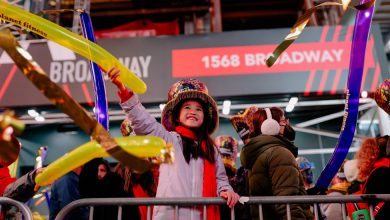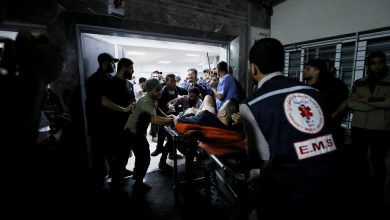At the N.F.L. Combine, Players (and Agents) Question Its Relevance

For 40 years, college football players hoping to be drafted by an N.F.L. team have shown off their speed, strength and personalities at the league’s most important talent evaluation — the scouting combine.
But recent changes to the event, which begins on Tuesday, the rise of pro days on college campuses and private workouts, and concerns over the inequity of the combine itself have led to a growing number of calls for the showcase to be fundamentally overhauled, even as the N.F.L. has sought to increase commercializing what many of its executives refer to as a “job interview” to become a pro.
Last week, agents for roughly half the 324 players expected to attend the combine mulled a boycott of workouts, which include drills like the 40-yard dash and bench press performed in front of team personnel, in protest of coronavirus-related restrictions they feared would compromise player performance. The organizers of the combine loosened those restrictions two days after the agents’ opposition became public, but the unusual showdown was emblematic of a simmering debate over the treatment of players who are not compensated for attending an event the N.F.L. continues to commercialize.
“As it has shifted to being made a reality TV show, and been shifted away from its original need, it’s become less and less valuable,” said J.C. Tretter, the president of the N.F.L. Players Association and a center for the Cleveland Browns. “Making it a prime time television event, pushing it late at night, is another instance where it’s not to the players’ benefit that they have to go out there and perform, and their draft stock relies on good performance.”
The N.F.L. and the National Invitational Camp, that company that operates the combine, say they are constantly striving to improve the player experience at the weeklong event, and some changes to this year’s combine have been adapted without major controversy.
All workouts will now be held on one day, instead of across two, for each position group. Food delivery to players has also been altered to give them more choices for when and what they can eat. Players will undergo only one full orthopedic exam, with the results presented to all 32 teams, and there is no longer a built-in window for teams to administer their own behavioral assessment tests.
While those adaptations were designed to make the sprawling event more efficient and less stressful for the prospects, the past two years of pandemic-interrupted scouting have yielded lessons that some agents believe have diminished the centrality of the combine.
The growing number of pro days hosted by colleges with multiple draft prospects and player workouts hosted by agents at private training facilities, as well as the increasing digitization of medical records and use of videoconferencing technology for player interviews, have given scouts alternatives for evaluating players outside Indianapolis, where the combine has been held since 1987.
Each year, some top prospects elect to sit out combine workouts. The former Alabama offensive tackle Evan Neal, a potential No. 1 pick, will wait until his pro day to do on-field testing, his agent confirmed Monday, taking more time to prepare after an extended college season. Joe Burrow and Chase Young did not work out at the combine in 2020, their standing as the No. 1 and 2 overall picks secure. And Lamar Jackson did not run or jump at any point before the 2018 draft, not wanting teams to use his athleticism as a reason to evaluate him at positions other than quarterback. But this year is believed to be the first time there has been a coordinated push against the conditions under which all prospects are asked to perform.
The combine has come under plenty of criticism in the past, including claims of racially biased evaluations and comparisons to slave markets with a group of athletes, most of them Black, being tested in a public display. This year, the league will not administer the Wonderlic I.Q. test, which some have criticized for having baked-in biases. Teams, however, can still use the test if they choose.
In January, the N.F.L. also informed teams they could be fined at least $150,000 and lose a draft pick if any club employee engaged in disrespectful conduct by asking players during interviews about topics like sexual orientation and mental health. It was the first time the league specified any potential penalties for offensive questioning.
But the N.F.L.’s expanded coverage of the combine has prompted new criticism that the routine evaluation is being turned into a commercial spectacle.
This year, 10,000 fans will be able to attend each of the four nights when on-field evaluations are held. And in May, N.F.L. team owners will vote on bids from Indianapolis, Dallas and Los Angeles to host the combine in 2023 and 2024. NFL Network will broadcast more than 50 hours of live coverage this year with 40 hosts and analysts, particularly focused on the on-field events, which were moved to prime time slots in 2020.
Despite the growing focus, the league said it was being very deliberate in how it expanded the combine to ensure that its core purpose — evaluating prospects — was not undermined.
“But there is such fan demand — interest from college fans, N.F.L. fans — and it’s grown since 2004 when it first went on NFL Network,” said Peter O’Reilly, the executive vice president for league events. Team personnel have “seen what the draft has become, the energy and how the prospects want to be there, and the core fans near the stage. It’s a great showcase of our games.”
The players’ union as well as one of the agents involved in organizing the proposed workout boycott, who requested anonymity for fear that his clients would face repercussions, say that the proposed boycott was just the start of discussions about how to protect the rights of the prospects, who are not yet employed by a team nor represented by the union.
With a growing number of college players already being paid for the use of their names, images and likenesses ahead of their N.F.L. careers, some observers have speculated that players should be paid to appear in broadcast events like the combine and the draft.
“I suspect the combine in the land of the N.I.L. will have to come up to the standard price of admission,” said Robert Boland, a former N.F.L. player agent who teaches sports law at Penn State. “‘You want me to do this as an activity, I want to be compensated.’ That’s the way to ensure against a couple of top recruits not showing up.”
Troy Vincent, the executive vice president for football operations at the N.F.L., did not dismiss the idea.
“Based off the landscape of the sport environment, you have N.I.L., you’ve got the transfer portal, we have to be prepared for anything in the future,” he said. “So I’m not taking that off the table. I would just say we have to be ready and prepared for all and to discuss all things.”
While the complaints about the combine are real and numerous, few people expect it to disappear because it remains the one place where hundreds of the best prospects can compete on the same field, and where teams can get standardized information on players’ health, including on injuries they may have suffered.
“It is the only time of year when we can get all the prospects together in one spot,” said Rick Spielman, a former Minnesota Vikings general manager. “To me, it actually puts more stress on the player if you’re not getting everything accomplished in that one week.”
Robert O’Connell contributed reporting.





